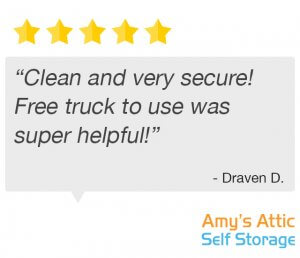In our digital and technology-driven age, physical books, documents, and photos can be considered items of the past. After all, possessing books, documents, and photos digitally can be extremely convenient as they can be taken practically anywhere. Although it is true that digital books, documents, and photos are extremely convenient, there are still very important reasons why someone would need to maintain a physical copy of these things, namely, to preserve history and to keep secure. Many people, also, just like to collect these items…who doesn’t love to look at old family photos?
Apart from just liking to have physical books, documents, and photos, possessing these articles in their more concrete form can be imperative to preserving history and maintaining security of vital information. Digital copies of these items can hacked, deleted, or altered, which can be especially threatening when pertaining to human resources, medical, or student records, legal or financial documents, unpatented research, and sentimental family memorabilia. Physical versions of these things, although susceptible to physical damage, are very secure since one would need physical access to these items to steal, destroy, alter, or censor them. Physical damage of these items can be minimalized with proper attention and intention. Many businesses take advantage of this high level security by keeping physical records.
While we know we might need to keep physical books, documents, and photos to preserve history and maintain security, we do not necessarily need to keep these things on our person or at our residence. It might actually be more secure to store them off-site, since knowledge of the location could be kept secure. Though, not just anywhere or in any way will do; they need to be kept in a secure, clean and climate-controlled location and in a way to protect from damage, such as, fading, disintegration, discoloration, mold, and pests. Books, documents, and photos remain in the best quality if stored between 30-50% humidity and below 75˚F; this temperature and humidity combats mold and pests while also keeping papers from becoming brittle.
In Central Texas, Amy’s Attic Self Storage is an ideal place to your books, documents, and photos. With five easily accessible locations near major roads and highways, accessing your belongings will be a breeze. Amy’s Attic features state-of-the-art security, such as 24-hour surveillance cameras, electronic keypad locked gates, and alarmed storage unit availability to keep your sensitive documents secure. Amy’s Attic also offers climate-controlled units to keep your books, documents, and photos in the best quality possible. Amy’s Attic also offers several convenience features: 24/7 gate access at most locations, month-to-month leasing, sizing guides, a FREE move-in truck (call to confirm availability), and auto, call-in, and online payment options. Best of all, the staff at every Amy’s Attic location is top-notch earning an over 4.5 star collective Google rating. The knowledgeable, friendly, and professional staff at Amy’s Attic would be happy to assist you in choosing a storage unit to fit your unique needs.
How to Properly Store Books, Photos, and Documents
- Wash and dry hands thoroughly before handling books, photos, and documents
- Clean (if necessary) with a microfiber cloth or vacuum to remove dust before storing
- Inventory and organize all items to make locating and unpacking easier – you might consider organizing items by similarity or alphabetically
- Photo / Document / Book Covers
- choose acid/chemical free covers
- if necessary use plastic fasteners to avoid damage by rust
- photo books- avoid adhesives of any kind which can cause photos to degrade over time – consider sleeves or photo corners as a substitute
- avoid textiles (cloth, leather, etc.) which can attract pests
- Containers – always store in containers to protect from moisture and physical damage
- choose clean (not used for food) durable, non-combustible metal container for best protection – plastic container would work too
- choose a container in the right size for the item you are storing to avoid damage from shifting
- avoid textiles (cloth, leather, etc.) which can attract pests
- Store flat to keep from bending with biggest similar items at the bottom
- Store off of ground (either on wooden pallets or shelving) – shelving might be best because it also helps with organization
- Store in a clean, secure, and climate-controlled unit
- Depending on desired level of security, restrict access and knowledge of storage unit location






